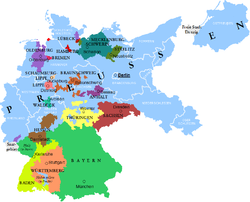This article relies largely or entirely on a single source .(January 2023) |

State elections in the Free State of Waldeck (prior to December 1921, the Free State of Waldeck-Pyrmont) during the Weimar Republic were held at 3-year intervals between 1919 and 1925. Results with regard to the total vote, the percentage of the vote won and the number of seats allocated to each party are presented in the tables below. [1] Pyrmont, in accordance with the results of a plebiscite, was detached from Waldeck and incorporated into the Free State of Prussia on 30 November 1921. Following a second plebiscite, Waldeck itself also subsequently merged with Prussia on 1 May 1929. [2]